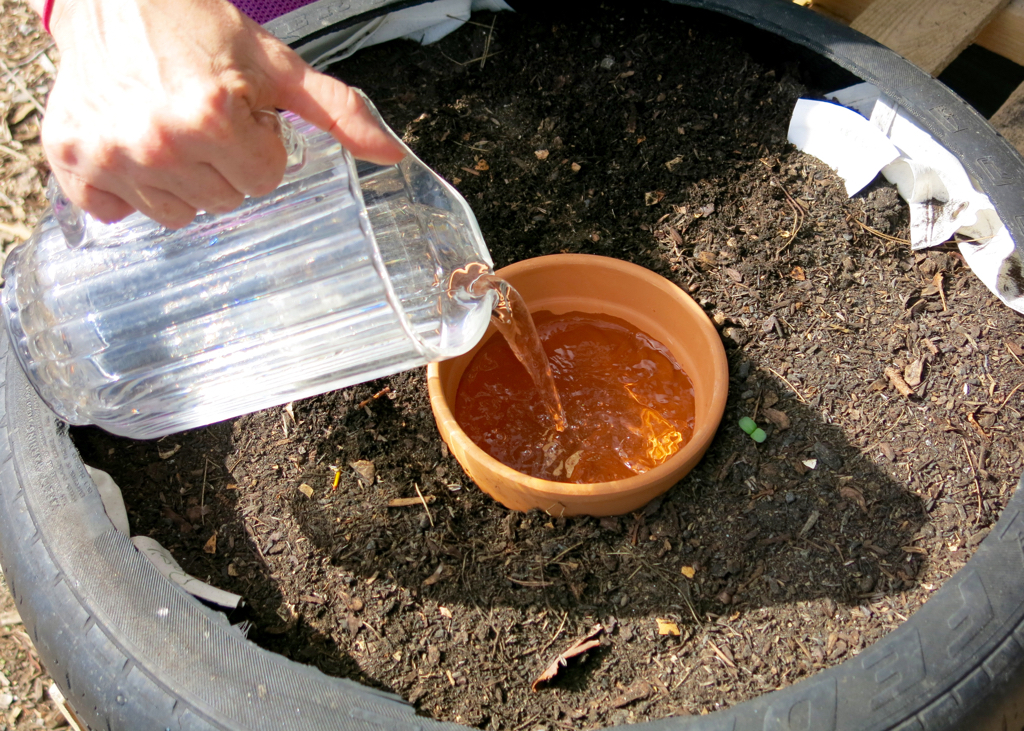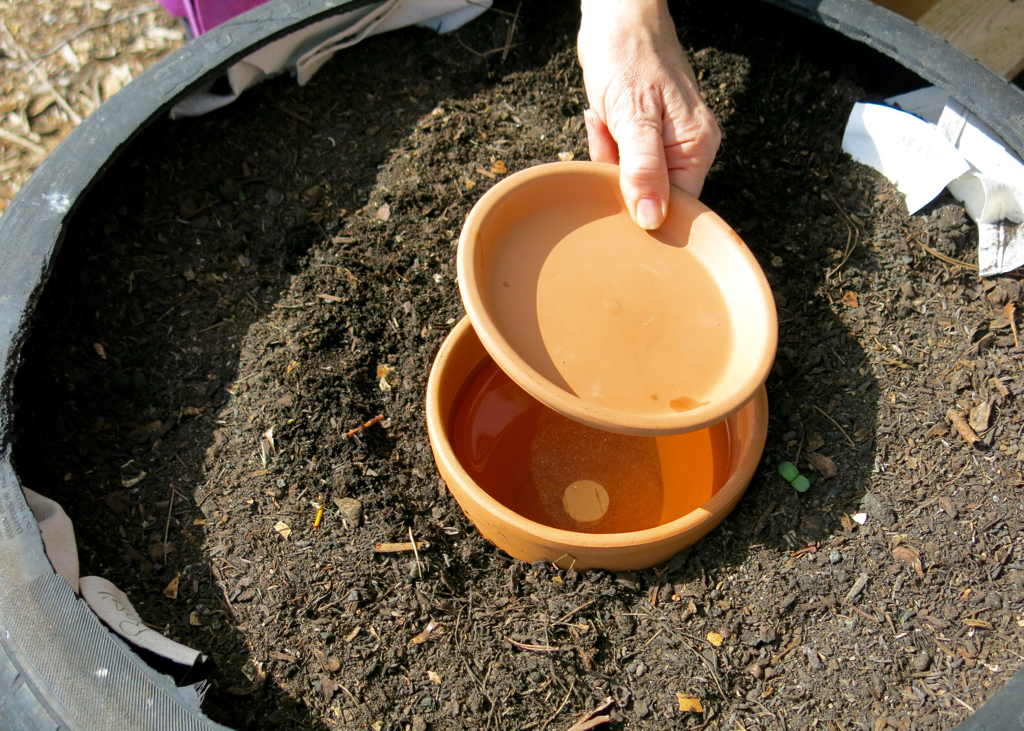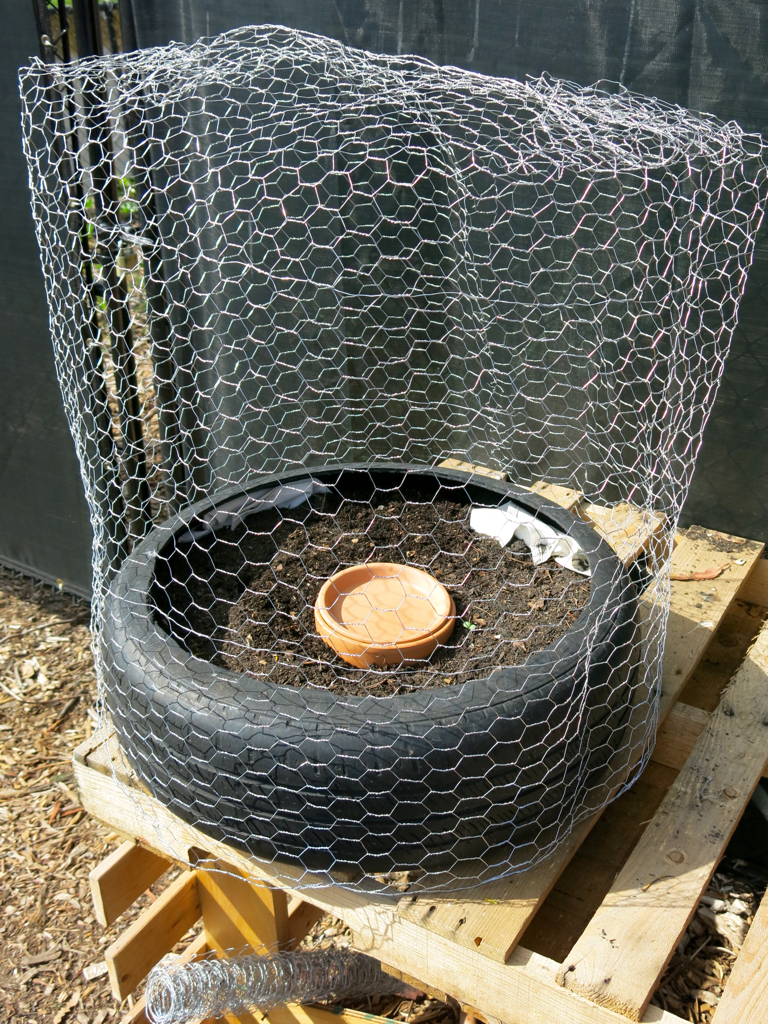Carol and I are experimenting with low-water irrigation systems for the garden. I’ve been using porous hose irrigation for years, purchasing porous hose made from recycled rubber tires, and burying the hose a few unches under the surface of the soil. David Bainbridge’s book Gardening with Less Water: Low-Cost, Low-Tech Techniques shows other highly efficient irrigation systems, including buried clay pots.
A buried clay pot is about as simple as an irrigation system can get: take a terracotta pot, put a cork in the hole in the bottom, bury it almost all the way in the soil, fill with water, then cover with a terracotta saucer.

In the photo above, we’ve buried a clay pot in the tire garden built by our congregation’s ecojustice class, and Carol is filling it with water. In the next photo, Carol is about to put a lid on the buried clay pot; you can see the cork down in the bottom of the pot.

Bainbridge suggests placing buried clay pots about every 24-36 inches in a standard garden. So we figure that one buried clay pot is probably enough for one tire garden. It will be interesting to see how often we have to fill the clay pot.
In our garden at home, we’re planning to try a somewhat more complicated version of this system: a porous terracotta capsule, fed by a hose. Until we get that to work, here’s a photo of the tire garden with the buried clay pot in the middle, and the squirrel-proof cage in place:

